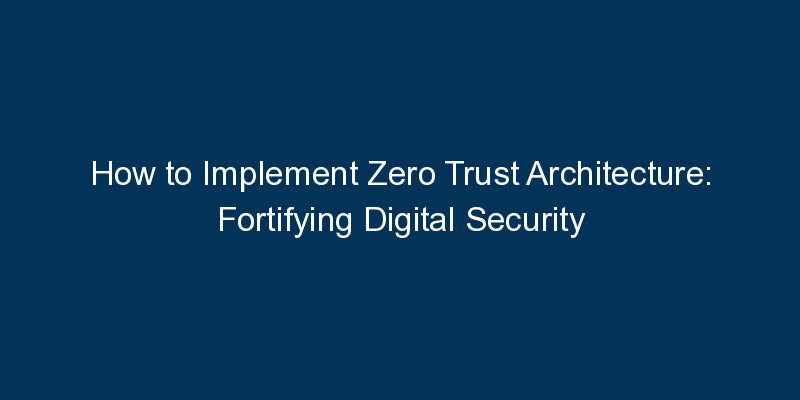As traditional security models face increasing challenges, the Zero Trust Architecture (ZTA) has emerged as a paradigm shift in securing digital assets. This blog provides a comprehensive guide on how to implement Zero Trust Architecture, offering a robust framework for protecting against modern cyber threats.
Introduction:
Zero Trust Architecture challenges the conventional approach to security by assuming that no entity, whether inside or outside the network perimeter, can be trusted by default. This guide explores the principles and steps involved in implementing Zero Trust, providing a secure foundation for the digital landscape.
Key Steps to Implement Zero Trust Architecture:
- Network Segmentation: Segment your network into smaller, isolated zones based on the principle of least privilege. This limits lateral movement for potential attackers within the network.
- Identity Verification: Implement strong authentication mechanisms, such as multi-factor authentication (MFA), to verify the identities of users and devices attempting to access resources.
- Micro-Segmentation: Extend the concept of network segmentation to the application level through micro-segmentation. This enhances security by isolating workloads and applications from each other.
- Continuous Monitoring and Analytics: Employ continuous monitoring tools and analytics to detect anomalous behavior and potential security incidents. Real-time analysis is crucial in a Zero Trust environment.
- Endpoint Security: Strengthen endpoint security by implementing advanced endpoint protection measures. This includes device health checks, endpoint detection and response (EDR), and regular security updates.
- Encryption of Data: Encrypt data both in transit and at rest to protect sensitive information from unauthorized access. Encryption adds an additional layer of security, especially in a Zero Trust Architecture.
Conclusion:
Implementing Zero Trust Architecture is a strategic move toward fortifying digital security in an increasingly interconnected world. By following the steps outlined in this guide, organizations can adopt a Zero Trust mindset and establish a resilient defense against evolving cyber threats.






















Comments